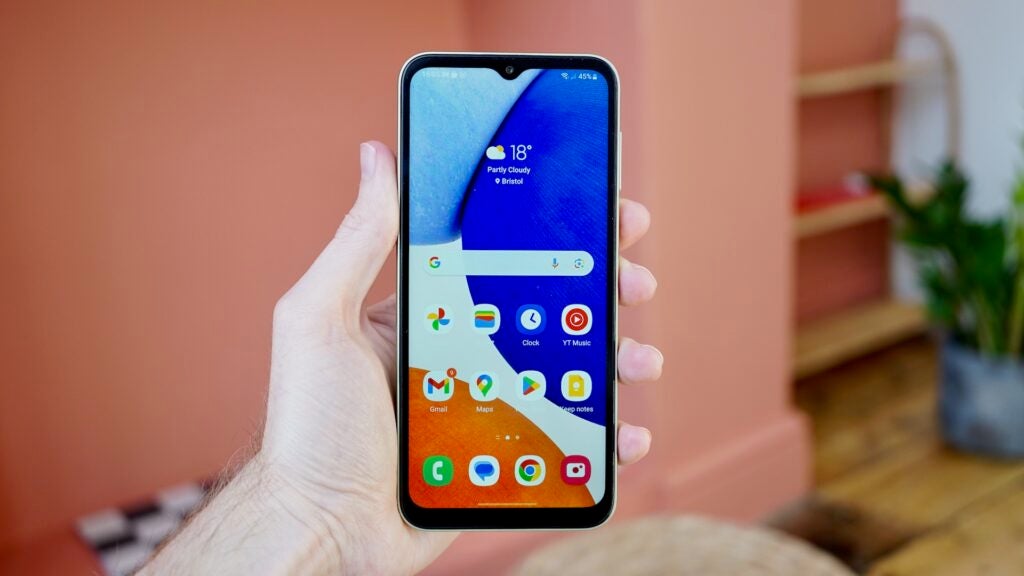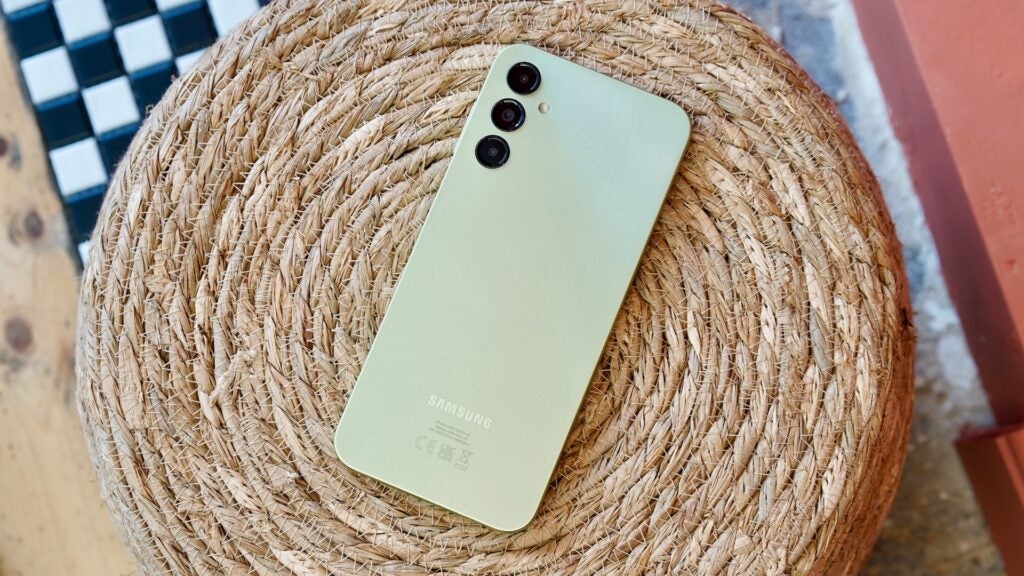Samsung’s Galaxy A15 5G wants to be the go-to budget smartphone, but how does it differ from the year-old Samsung Galaxy A14 5G?
While we were fans of the Samsung Galaxy A14 5G when we reviewed it in 2023, there were several areas that needed improvement, from the disappointing IPS LCD display tech to the sluggish performance on offer.
However, this year’s Samsung Galaxy A15 5G looks to fix some of those complaints while also coming in at £10 cheaper than its predecessor.
While we’re yet to review the Samsung Galaxy A15 5G, we’ve spent plenty of time with the Samsung Galaxy A14 5G. Here’s how the two compare to help you decide which is best for your needs.
The Samsung Galaxy A15 5G has upgraded screen tech
When it comes to screen tech, the newer Samsung Galaxy A15 5G is certainly the smartphone to opt for. While the Samsung Galaxy A14 5G has a rather standard IPS LCD display, the newer model has seen an upgrade to Super AMOLED screen tech.

Considering we felt that the use of an LCD screen was one of the big downsides of the Galaxy A14 5G, it’s a smart move for Samsung to upgrade the tech with the latest model. The newer model also has a smaller bezel surrounding the screen than its predecessor. It doesn’t serve any functional purpose, but it does mean that the updated model looks newer and slightly more premium.
Elsewhere, though, the screen experience is much the same regardless of which you opt for.
The Galaxy A15 5G shares the same 90Hz refresh rate and FHD+ resolution as its predecessor, though it is 0.1 inches smaller this time at 6.5 inches. However, with such a negligible difference, you likely wouldn’t be able to tell the difference between it and the Galaxy A14 5G’s larger 6.6-inch panel in everyday use.
The Samsung Galaxy A14 5G utilised the entry-level 7nm MediaTek Dimensity 700 chipset which we found to be fine, if not a little sluggish, during our review, with some similarly priced alternatives scoring better in our benchmark tests.
That was paired with a rather paltry 4GB of RAM and 64GB of storage by default, though the latter could be extended by the use of a microSD card.
The new Galaxy A15 5G isn’t a complete game-changer in processing power that’ll let it compete with much more premium options, but it should be at least a little bit faster with the more efficient 6nm MediaTek Dimensity 6100+.
Depending on the region you’re in, you could also benefit from more RAM and storage with either 4-, 6- or 8GB of RAM and either 128- or 256GB of storage.
We’re yet to benchmark the Galaxy A15 5G, but given the improved processor in use, we wouldn’t be surprised to see it outperform last year’s model. We’ll be sure to update this section once we know for sure.

The Samsung Galaxy A15 5G has a slightly more capable camera setup
The Samsung Galaxy A15 5G continues to improve the camera experience on offer from the company’s budget range, sporting the same 50MP primary sensor as its predecessor that we were pretty impressed with during testing – especially given the price – alongside a 2MP macro lens and an upgraded 5MP ultrawide.
The latter replaces the near-useless 2MP depth sensor present on the Galaxy A14 5G, essentially turning a dud lens into one that can be used – although with a 5MP resolution, even its replacement will struggle to wow most consumers.
That said, at least the inclusion of the new ultrawide lens makes the Galaxy A15 5G somewhat more versatile than its predecessor was.
The Samsung Galaxy A14 5G is even more of a bargain now
Both the Samsung Galaxy A15 5G and the Galaxy A14 5G are budget-focused smartphones with price tags to match. More specifically, the Galaxy A15 5G is priced at a tempting £199, making it £20 cheaper than the year-old Galaxy A14 5G and its £219 RRP.
However, since the release of the newer Galaxy A15 5G, the A14 5G has plummeted further in price – down to as little as £136 at the time of writing.
So, if the upgraded display tech, newer processor and ultrawide camera aren’t that tempting for your needs, you could save yourself a pretty penny by going for the older model.




